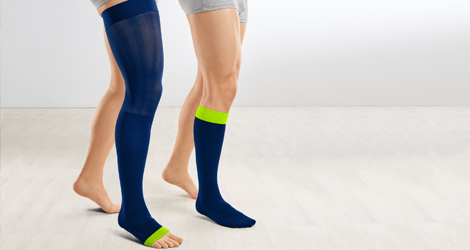Compression socks or stockings can be found on the legs of a wide swath of the population, from pilots, flight attendants, runners, and nurses to pregnant women, people recovering from surgery, and people otherwise at risk for blood clots in their legs.
Who should wear compression stockings?
 The clearest benefit is for people with certain leg problems or at risk for blood clots in the legs, known as deep vein thrombosis (DVT). Many factors can increase the risk of these clots, including prolonged bed rest (such as after surgery), sitting for long periods (such as on a plane), use of birth control pills or hormone replacement therapy, pregnancy, family history of DVT, inflammatory bowel disease, and certain genetic clotting disorders. Compression stockings are also sometimes used in people who have an acute DVT, to prevent a group of symptoms known as post-thrombotic syndrome that includes leg pain and swelling.
The clearest benefit is for people with certain leg problems or at risk for blood clots in the legs, known as deep vein thrombosis (DVT). Many factors can increase the risk of these clots, including prolonged bed rest (such as after surgery), sitting for long periods (such as on a plane), use of birth control pills or hormone replacement therapy, pregnancy, family history of DVT, inflammatory bowel disease, and certain genetic clotting disorders. Compression stockings are also sometimes used in people who have an acute DVT, to prevent a group of symptoms known as post-thrombotic syndrome that includes leg pain and swelling.
Other groups that can benefit from wearing compression stockings include people with varicose veins, leg ulcers (referred to specifically as venous leg ulcers), or leg swelling (edema), as well as those with circulatory problems. People who spend a lot of time on their feet may feel that the stockings improve comfort, even if they don’t have a clear health benefit in those cases. They’re also popular among some athletes, such as runners and basketball players.

